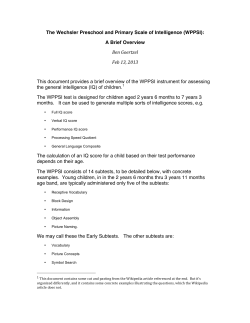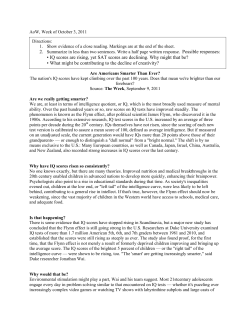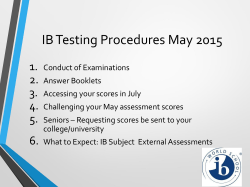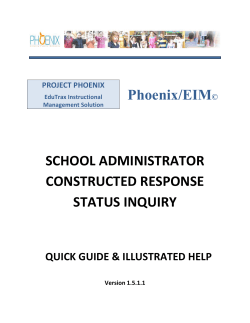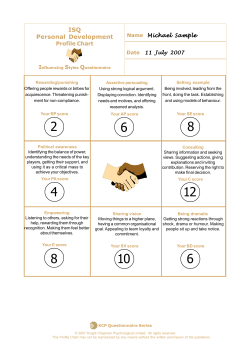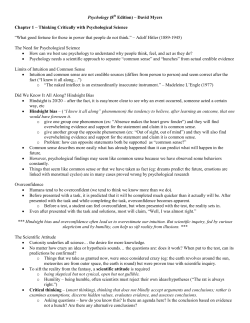
WISC-V Assessment and Interpretation book
WISC-V Assessment andfor Interpretation The Pragmatic MBA Scientific and Technical Executives Scientist-Practitioner Perspectives Lawrence G. C. Weiss, Bertrand LiangDonald H. Saklofske, James A. Holdnack and Aurelio Prifitera The only book describing the clinical use and interpretation of the new WISC-V test. ISBN: 978-0-12-404697-9 PUB DATE: July 1, 2015 LIST PRICE: $59.95 AUDIENCE: This volume will be of great interest to school psychologists, educational psychologists, and clinicians. AUTHORS: Lawrence G. Weiss Donald H. Saklofske James A. Holdnack Aurelio Prifitera The Wechsler Intelligence Scale is the most widely used intelligence test for children worldwide. WISC-V introduces new subtests, composite scores, process scores, error scores, and scaled scores as a more complex and accurate means of assessing cognitive abilities. WISC-V Assessment and Interpretation provides practical information for clinicians on selection of subtest measures, administration, and interpretation. New subtests are described along with tips for accurate administration and scoring. Full Scale IQ is identified as important for predicting relevant behaviors, and primary index scores for characterizing the child’s strengths and weaknesses. Classroom indicators of low scores on each of these abilities are identified, with suggested interventions, accommodations, and instructional strategies for low scorers. Coverage includes ethnic differences for the Full Scale IQ and each primary index score, along with evidence of the profound influence of parental attitudes and expectations. Several other societal and contextual factors relevant to understanding racial/ethnic differences are presented. Two chapters review use of the WISC-V for identifying learning disabilities, testing of individuals with dyslexia, and best-practice recommendations to ensure accurate diagnosis and intervention. Concluding chapters describe advances in the Q-interactive system platform allowing administration of the WISC-V on iPads and other tablets and how clinicians can tailor assessment using select WISC-V subtests and features. KEY FEATURES • Describes the new subtests, revised test structure, and test extensions • Advises clinicians on test selection and custom tailoring of assessment measures • Provides best practice recommendations for accurate administration and scoring • Addresses electronic administration via tablets and comparison to print scores • Reviews social/contextual factors for understanding racial/ethnic differences • Translates scores to predict behaviors and identify child strengths and weaknesses • Suggests interventions, accommodations, and instructional strategies for low scorers To order visit the Elsevier Store http://store.elsevier.com TABLE OF CONTENTS Chapter 1 - WISC-V: Advances in the Assessment of Intelligence Chapter 2 - Practical Issues in WISC–V Administration and Scoring Chapter 3 - Practical Considerations in WISC-V Interpretation and Intervention Chapter 4 - Theoretical and Clinical Foundations of the WISC-V Index Scores Chapter 5 - WISC-V Use in Societal Context Chapter 6 - The Flynn Effect and its Clinical Implications Chapter 7 - Testing Hispanics with WISC-V and WISC-IV Spanish Chapter 8 - WISC-V and the Evolving Role of Intelligence Testing in the Assessment of Learning Disabilities Chapter 9 - Translating Scientific Progress in Dyslexia into 21st Century Diagnosis and Interventions Chapter 10 - Issues Related to the WISC-V Assessment of Cognitive Functioning in Clinical and Special Groups Chapter 11 - Digital Assessment with Q-interactive Chapter 12 - WISC-V and the Personalized Assessment Approach
© Copyright 2025
